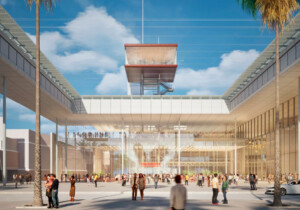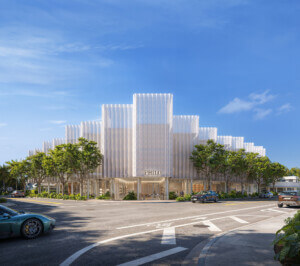This article appears in The Architect’s Newspaper’s April 2017 issue, which takes a deep dive into Florida to coincide with the upcoming AIA Conference on Architecture in Orlando (April 27 to 29). We’re publishing the issue online as the Conference approaches—click here to see the latest articles to be uploaded.
Deep in the Florida Everglades, surrounded by wildlife and natural preserves, an abandoned correctional facility has become the unlikely background for high-stakes military training operations, far from the public eye. The Hendry Correctional Institute, a former high-security state prison complex turned private training facility, is the unlikely protagonist in a new generation of military-style training scenarios.
Since 2012, the site has been run by Altair Training Solutions, a private enterprise that rents out the facility and provides training to clients across a spectrum of military, private, and security interests. Site organizers capitalize on the facility’s protective architecture, and its layers of security infrastructure left over from its prison days, to inject realism in simulated missions for special operations forces, law enforcement agencies, and weekend hobbyists.
The site signals a shift in what we might think of as “adaptive reuse” in a niche market of the newly securitized economy. Instead of repurposing an abandoned warehouse or a dilapidated factory into lofts or retail space, the scheme here was to reinvigorate a vast area on the urban scale—including 1,150 surrounding acres, a nearby county correctional facility, two hotels, houses, dining halls, a research and development facility, long and short shooting ranges, shoot houses, and a 3,800-foot-long private airstrip. Instead of targeting traditional market forces, the land-grab speculation hinges on the presumed insatiable and continued interest of militarized forces in the kind of free-rein, live-fire, no-holds-barred urban expeditions that only an underused, remote, and built-up site allows.
Such sites have long been objects of desire for the U.S. armed forces, which see them as ready-made approximations of emerging theaters of operations—stand-ins for the streets, markets, and central business districts of hostile cities a world away. The RAND Corporation identified abandoned towns as future training gold mines in the mid-2000s. The U.S. military has, in recent years, used existing—and sometimes inhabited—domestic cities to add realism to their training regimens. But this site was identified and purchased by private citizens (albeit former-military), and was initially supported by public tax incentives (a package the State of Florida called Project Assassin, which was later rescinded). The newly reimagined facility opens its doors to the untrained hobbyist and gun enthusiast. Public programming requires no military training or law-enforcement credentials—passing a criminal background check and paying the entry fee gains entry to select courses. In one recent example, students from every walk of life spent a Saturday learning to shoot targets near the former prison law library from hovering helicopters. This is a mom-and-pop shop for street-front shoot-’em-ups. This is amateur hour. And it may only be the beginning, a model for the private security urbanism to come.
To better understand the draw of the site, one must understand remoteness as a fundamental asset of the new private security urbanism. The state has historically invested in remote areas for detention purposes, using distance from populated centers as a buffer. Built in 1977 to be intentionally surrounded by uninhabited wilderness, the facility had been deteriorating for decades. The required public funding for renovations and remote access had become a burden to the State of Florida. The once-desired remoteness proved to only expedite the prison’s eventual demise, but later offered an opportunity for other uses—allowing for the type of training other non-remote sites cannot.
The details of the training contracts are confidential, but one can imagine the series of exfiltration and other tactical operations that this type of location affords. As other military installations are spending money to faithfully recreate every physical nuance of projected intervention sites from scratch, Altair comes ready-made with a bona fide architecture of imprisonment. The former prison and its buildings, no longer capable of sustaining prior instantiations of security, are now seen as “up for grabs”—a kind of marketable good, repurposed to the whims of the new securocratic order.
It takes a mind with a particular type of calculus to understand the high value of civic remnants in the oncoming era. While the standard of real estate development speculation looks for new density and economic growth opportunities, these alternative post-urban investment schemes search for forgotten ghost spaces, where remoteness and absence of human inhabitation are the prized components. Given the rampant privatization of the prison-industrial complex, abandoned state prisons could soon be a boon to the speculative rehabber of disused security infrastructure. The architecture of incarceration is offered as a stage set, perpetuating its imagined use.










